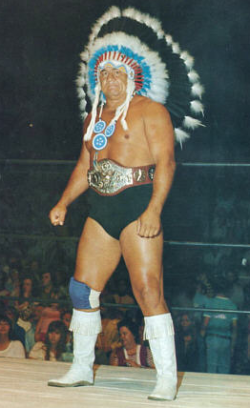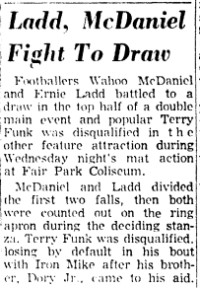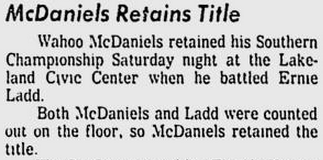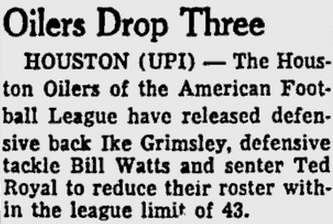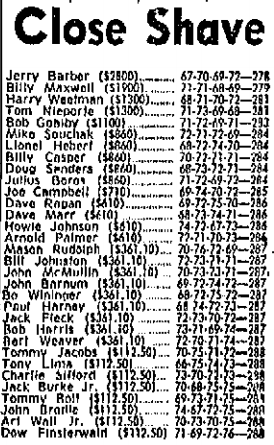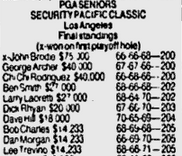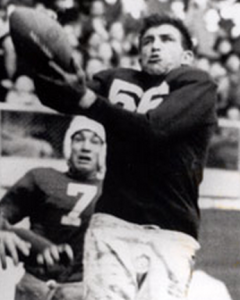Every NFL season seems to produce a Statistical Phenomenon or two. So far in 2014, the Cowboys’ DeMarco Murray is That Guy. Let’s pray to the grid god that Murray gets to finish what he’s started, because what he’s started is pretty impressive.
Two weeks ago, when I first wrote about him, it was because he’d rushed for 100 yards in each of his first four games — something that had been done only six other times since 1960. Well, now he’s rushed for 100 yards in each of his first six games. No other back has done that since ’60.
Murray also is continuing to shoulder a heavy load. Through Week 4, he was on pace for 396 rushing attempts, which would be the seventh-highest total all time. But his 29 carries Sunday in Dallas’ 30-23 road shocker over the Seahawks put him on a 424 pace. That’s eight more the record of 416, set by the Chiefs’ Larry Johnson in 2006.
In addition, Murray has had 180 touches (rushing attempts plus receptions) in his first six games. Only three backs since ’60 have had more. The Top 5:
MOST TOUCHES BY A RUNNING BACK IN THE FIRST 6 GAMES SINCE 1960
[table width=”425px”]
Year,Running Back\, Team,Rush,Rec,Total
2000,Eddie George\, Titans,165,20,185
2000,Ricky Williams\, Dolphins,155,27,182
2002,Priest Holmes\, Chiefs,143,38,181
2014,DeMarco Murray\, Cowboys,159,21,180
1985,James Wilder\, Bucs,144,35,179
[/table]
Wilder, by the way, holds the mark for touches in a season: a superhuman 492 in 1984. Murray projects to 480 (an average of 30 a game). That would be the second-best total in NFL history. As I’ve said before, though, high-volume seasons like that aren’t usually conducive to long-term productivity. Dallas coach Jason Garrett needs to be mindful of the Burnout Factor.
Still, it would nice to see Murray take a run at the Triple Crown — leading the league (or tying for the lead) in rushing yards, per-carry average and rushing touchdowns. It’s a feat that’s been accomplished by just six modern backs, five of whom are in the Hall of Fame. The short list:
RUNNING BACK TRIPLE CROWNS SINCE WORLD WAR II
[table width=”425px”]
Year,Running Back\, Team,Rush Yds, Avg,TD
1998,Terrell Davis\, Broncos, 2\,008,5.1,21
1980,Earl Campbell*\, Houston Oilers, 1\,934,5.2,13
1977,Walter Payton*\, Bears, 1\,852,5.5,14
1975,O.J. Simpson*\, Bills, 1\,817,5.5,16
1967,Leroy Kelly*\, Browns, 1\,205,5.1,11
1963,Jim Brown*\, Browns, 1\,863,6.4,12
[/table]
(Brown led by a comfortable margin in each category – in rushing by 845 yards, in average by 1.4 and in TDs by 3.)
* Hall of Famer
Murray leads NFL rushers with 785 yards and six TDs, but he has some work to do on his 4.9-yard average. The No. 1 guy in that department through six games, the Ravens’ Justin Forsett, is averaging 6.4 on 64 carries.
A Triple Crown is just incredibly hard to pull off. Consider: Seven backs have rushed for 2,000 yards in a season, but only one of them – Davis – won the Triple Crown. LaDainian Tomlinson couldn’t do it in a year (2006) he led the league in rushing (1,815) and scored a record 32 touchdowns, 28 on the ground (2006). Brown couldn’t do it in a year (1958) he broke the season rushing mark by 381 yards (with 1,527), ran for nearly twice as many scores as anybody else in the league (17 to the runner-up’s 9) and had a per-carry average of 5.9 (which ranked a mere fourth).
What makes it even more difficult is that quarterbacks have led the league in rushing average three of the past four seasons (Michael Vick, Cam Newton, Robert Griffin III) and seven times in the 2000s. Let’s face it, quarterback yards are different from running back yards. For one thing, QBs have more room to roam.
Still, some running back someday will have a monster year and become the seventh member of the Triple Crown Club. And if it doesn’t happen to be Murray, he’ll have plenty of illustrious backs to keep him company.
Note: The Chargers’ Paul Lowe also had a Triple Crown in the pre-Super Bowl AFL: 1,121 rushing yards, 6 touchdowns (tie) and a 5-yard average (edging the Chiefs’ Mack Lee Hill by .03) in 1965. If you want to count that, too, be my guest. I’m inclined to exclude those years, even though the NFL record book doesn’t. The two leagues just weren’t comparable — yet.
Source: pro-football-reference.com


